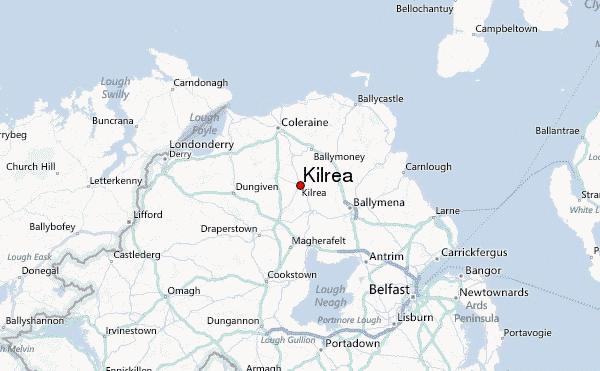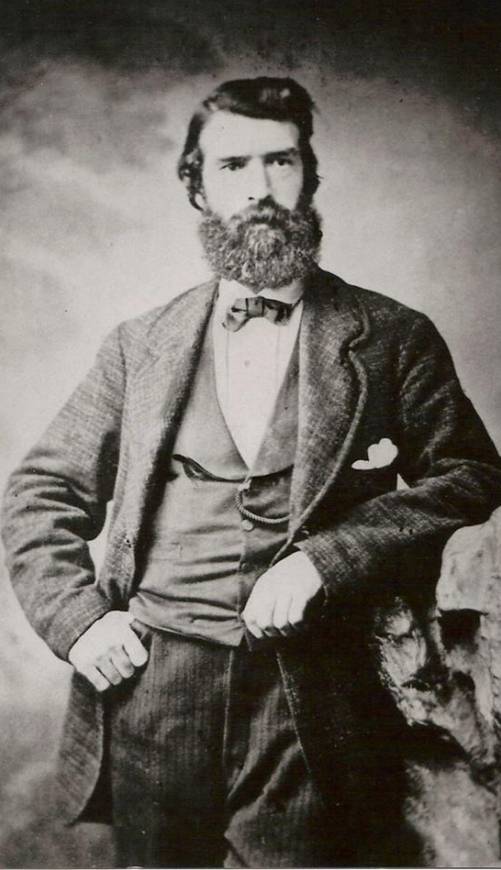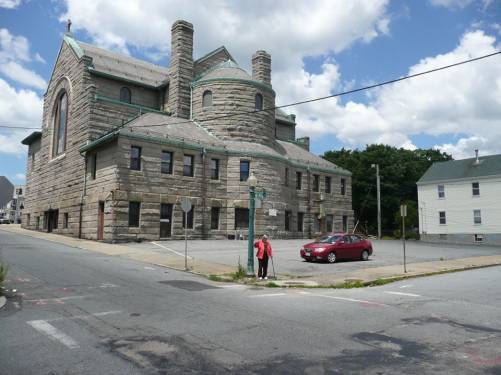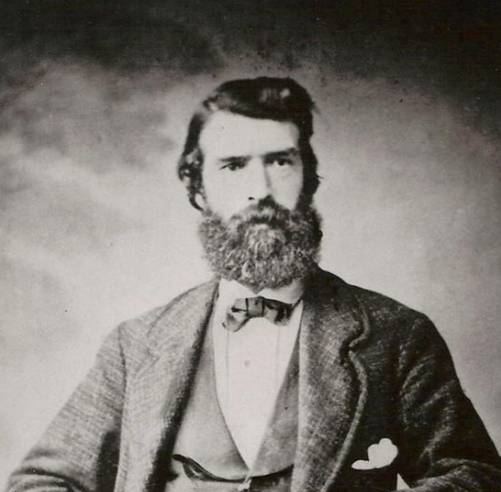
by Jim Rose
This story was sent to us by Jim Rose, a reader who was proud of his family’s history and its presence in New Bedford. There are many numbers of ethnic communities in New Bedford which reflect the landscape of most of America – today and of yesteryear. Since America began there has always been a kaleidoscope of cultures in varying degrees coming to what was, and still is, a land of opportunity. In the past we’ve featured Africa-American, Cape Verdean, Portuguese, Italian, and Hispanic cultures. It seems fitting with St. Patrick’s Day approaching that we discuss the Irish presence in New Bedford’s colorful past.
Do you have a family history to share? Some great photos? Please contact info@newbedfordguide.com and let us know!
These photos, history and anecdotes are a tribute to my great-great-grandfather Patrick Keane who lived in New Bedford from 1870 until his death in 1907.

Patrick Keane was the son of Patrick Keane and Sarah Carrigan, born on March 17th, 1832 in Kilrea County, Londonderry, Northern Ireland. When Patrick was young, his parents moved their family to Scotland (Glasgow) where they first appear in the 1851 census there. They may have moved to Glasgow because of the Great Famine that occurred in Ireland during the late 1840’s.
That same year, at about age 20, Patrick Keane visited the United States for the first time – though there are no records of it. For unknown reasons, he returned shortly thereafter. Upon his return to Glasgow he and his brothers Edward and Michael learned their glass-works trade. The Keane’s lived near St. Rollox Glassworks, and may have initially learned their skill of glass cutting and glass etching from St. Rollox Glassworks. Michael Keane would later ply his trade at James Couper and Sons Glass Works in Glasgow. He was a lauded artisan and brilliant crystal/cut-glass engraver.
Being young and successful, Patrick would inevitably find love and in January of 1859, Patrick married Margaret McWade at St. Paul’s (St Machan’s) Catholic Church in Campsie/Lennoxtown, Scotland. Soon they would build a family, three daughters – Mary Ann, Josephine and Sarah – and a son, Patrick III. Sadly, they would lose Mary Ann to Scarlet Fever in 1862. They would have another daughter named Mary in 1864.
It is likely that Patrick discussed his travel to America and what he saw here and this would influence the decision to take their children and immigrate to America in 1869. His brother Michael would follow him.

The family lived at 167 Bolton Street and would have another daughter, Rosann born in America. He found employ with a William Libbie, who would eventually acquire the iconic Mt. Washington Glass Works of New Bedford. While everyone knows that New Bedford is the Whaling City, it was also known as the City of Light, and the City of Glass. Mt. Washington Glass Works’ presence and history in New Bedford is deserving of an entire article of its own – suffice it say, it was one of the world’s premier glass work facilities.
In 1870, after the death of two year-old Rosann, the family decided to relocate from the South Boston facility to the one in New Bedford. Patrick would purchase a house from James H. Tripp at 41 Wing Street, which was previously occupied and likely built by New Bedford Selectman (and cotton dealer) Thomas B. Bush. Here they would have another child: John McWade. This home would stay in the family for four generations of Keanes. Here Keane plied his trade, making a solid name for himself as one of the region’s best glass artisans.
Things were looking up for the Keanes and in 1872, Patrick and Margaret would add another addition to the family: a boy named Leo Edwin. In 1874, Margaret would give birth to a girl Francis, further swelling the ranks. This may seem a bit “busy,” but keep in mind this was the norm in those days. People had many children since so many died leading up to childbirth and often children would succumb to illnesses at very young ages. Having many children increased the odds of having someone carry on the family’s name. In addition, there were no child labor laws, so the larger the family the more people there was to work on the farm, land or at local mill jobs. Very young children were expected to work in spite of the hazards.
In 1875, Patrick would became a naturalized citizen of his adopted country. Tragedy reared its ugly head in 1877 and three year-old Francis passed away of unknown causes.

In 1881, while playing in a home under construction with other neighborhood boys, Leo Edwin would fall off a ladder and break his neck and die instantly.
In 1882 the Keanes gave birth to a girl named Mary. Unlike the previous Marys, this Mary would live a long life (until 1967) breaking the morbid streak. In 1884 they would give birth to their final child, Lenora Clementine.
In 1885 Patrick would strike out on his own and open a glass-works studio “P. Keane Glass Cutter” on the second floor of the New Bedford Foundry building located at 272 South Water Street. Having an aptitude for business, sometime in the 1880s he also opened a Saloon at 15 Howland Street.
The Keane family was active in music and theater in New Bedford, acting in plays and performing music and singing. Daughter Josephine was an accomplished pianist who taught piano and played in theaters during the silent film era. His other daughter Sarah sang and played piano. There was also a violinist in the family who’s unnamed photo remains as a testament to the Keane family’s love of music and the arts.
In the late 1890’s Patrick Keane exhibited his cut glass work at an industrial exhibition on Weld Street in New Bedford furthering his name and business. He would finally retire in 1907 after five decades in the trade. On December 30th, 1908, Patrick Keane would die from complications of old age. He was laid to rest at his family plot in St. Mary’s Cemetery in Dartmouth Massachusetts, having lived a full life.

Patrick Keane’s penned his last Will & Testament in 1907, which left money to several family members. This will revealed that he owned two homes and a house lot. The second home was occupied by his sister, which his will stated was to remain in her possession until she died.
St. John’s Church bought the house at 41 Wing Street and was planning to use it for a Rectory. The church owned it, but they never got use of it because three of Patrick’s children lived there until they died or moved to a rest home in the 1950’s. Somehow the business savvy Irishman Patrick Keane had an iron-clad contract with St. John’s Church that they could own the house, but his adult children could live there until the day they died.
The Keane’s lineage lives on in the greater New Bedford area and Mr. Keane’s descendants live in New Bedford and Dartmouth. A few Fletchers and Gardners have married into the Keane family. In fact, the founder of Gardner real estate, Bob Gardner, married Patrick Keane’s great-grand-daughter Patricia Harrop. There are even a few Sylvias who have married into the family as well – Frederick Sylvia III worked in the New Bedford school district as a high school counselor, and sons Kurt and Darren Sylvia attended New Bedford schools.
My great-grandfather James Tallman Mosher married Sarah Keane, they lived at 41 Wing Street as well, and raised four children there; between 1886-1927 James & Sarah lived at 41 Wing with the rest of the Keane family, in 1927 they moved to Russell’s Mills.
Special thanks to John McCreadie of Glasgow Scotland for helping with Patrick Keane and Margaret McWade’s story; he searched cemeteries and researched archives in Scotland (things you can’t find on Ancestry.com.) Jay Avila at Spinner Publications for helping with research on Patrick Keane’s house and where he worked. Joan Barney of the New Bedford Public Library who ofund Patrick Keane’s 1907 retirement story in the newspaper microfilms.
I also want to thank all my family members who contributed. I spent over 4 years (2009-2012 and counting) doing research and contacting people to get as much info as possible on the Keane-McWade family.
[nggallery id=233]
 New Bedford Guide Your Guide to New Bedford and South Coast, MA
New Bedford Guide Your Guide to New Bedford and South Coast, MA









You appear to have forgotten about the Yankee culture which built the Keane House (built by the Tripp family).
Were it not for the Yankee Quakers who founded New Bedford, there would have been no place for subsequent nationalities to come.
Any particular reason you’ve omitted them?
Thanks for this wonderful story (and research) about Patrick Keane and his move to America.
I was raised a few miles from Kilrea in Ireland. It’s a wonderful little village, with much history.
Many a happy day (and evening) was spent there.